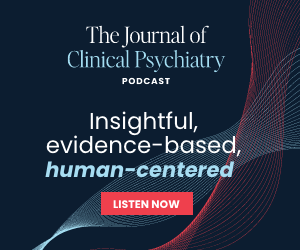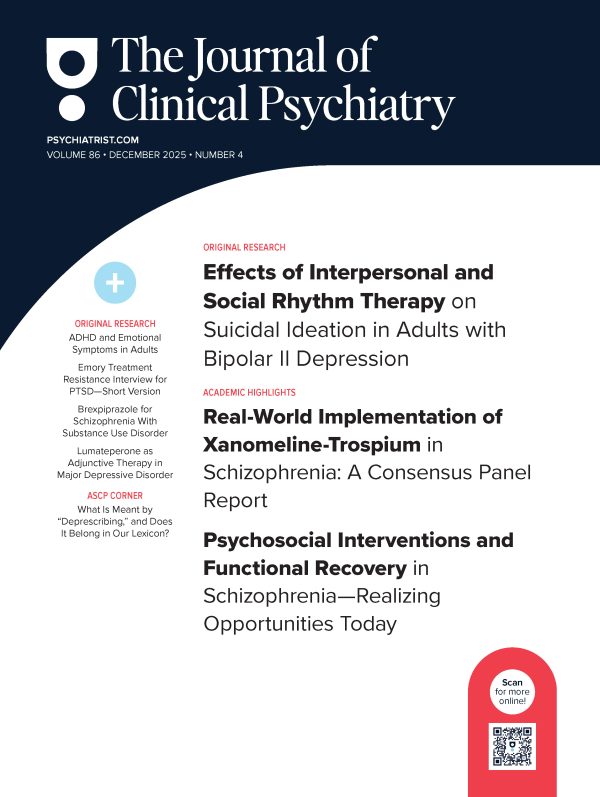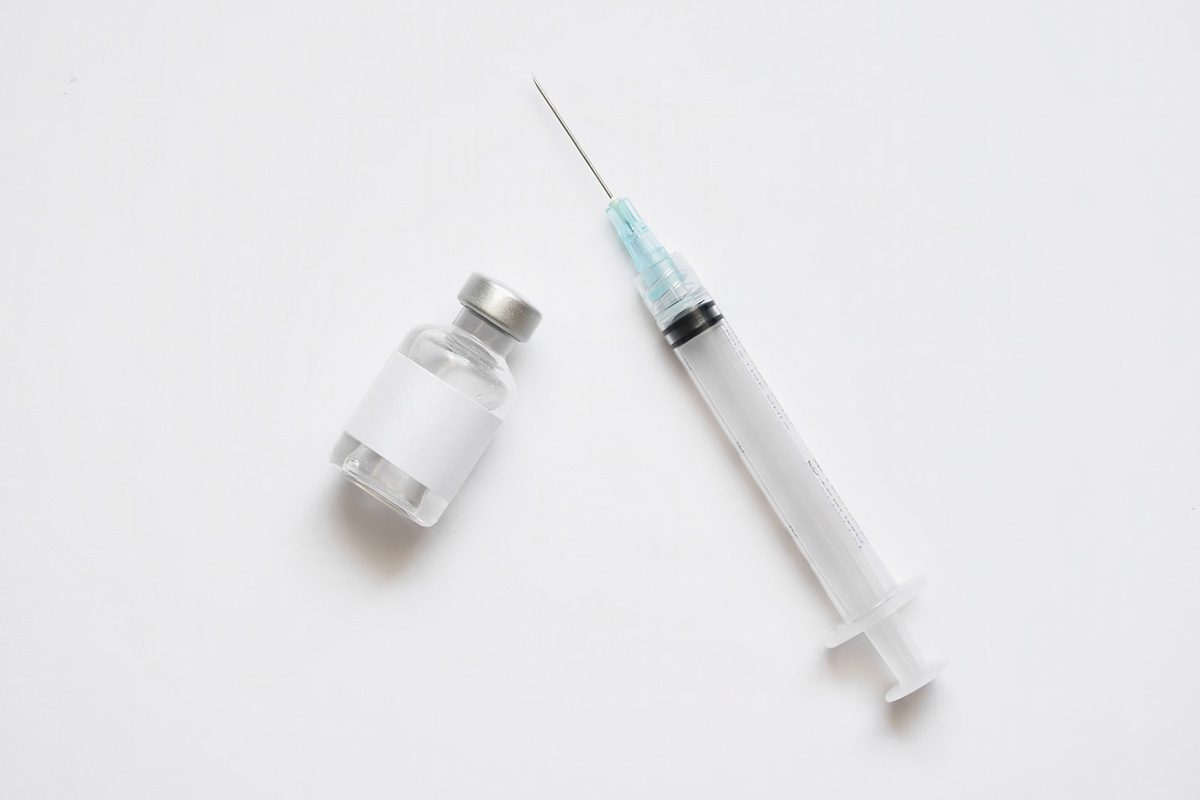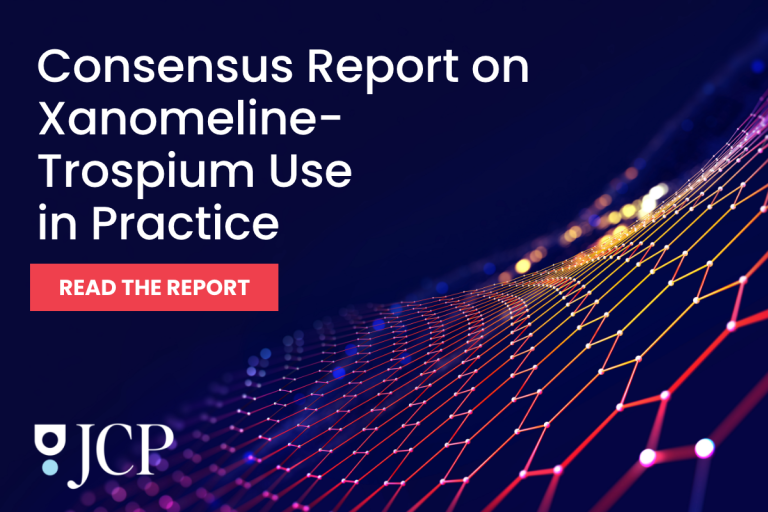ABSTRACT
Objective: Attenuated niacin responses and changes in cytokine levels have been reported in schizophrenia. However, prior studies have typically focused on schizophrenia, and little is known about the association between niacin response and inflammatory imbalance in clinically high-risk psychosis (CHR). This study aimed to assess the niacin response to inflammatory imbalance for association with conversion to psychosis within 2 years.
Methods: A prospective case-control study was performed to assess the niacin response and interleukin (IL)-1β, IL-2, IL-6, IL-8, IL-10, and tumor necrosis factor-α levels in 60 CHR individuals and 60 age- and sex-matched healthy controls (HC) from May 2019 to December 2021. Participants with CHR were identified using the Structured Interview for Prodromal Syndromes. The niacin-induced responses were measured using laser Doppler flowmetry. From the dose-response curves, the log-transferred concentration of methylnicotinate required to elicit a half-maximal blood flow response (LogEC50) and maximal minus minimal blood flow response (Span) values were calculated for each subject. Serum cytokine levels were measured using enzyme-linked immunosorbent assay. Individuals with CHR were then divided into converters (CHR-C, n = 15) and non-converters (CHR-NC, n = 45) to psychosis based on their 2-year follow-up clinical status.
Results: The CHR group exhibited significantly higher LogEC50 (t = 3.650, P < .001) and Span (t = 2.657, P = .009) values than the HC group. The CHR-C group exhibited a significantly shorter Span (t = 4.027, P < .001) than the CHR-NC group. The LogEC50 showed a trend toward significance (t = 1.875, P = .066). None of the cytokine levels were significant. The conversion outcome can therefore be predicted by applying LogEC50 (P = .049) and Span (P < .001). The regression model with variables of LogEC50, Span, family history, and scores of positive symptoms showed good discrimination of subsequent conversion to psychosis and achieved a classification accuracy of 91.7%. The decreased LogEC50 in the CHR-C group was significantly correlated with the increased IL-1β/IL-10 ratio (Spearman ρ = −0.600, P = .018), but this correlation was nonsignificant in the CHR-NC group.
Conclusions: Our findings indicate a significant association between niacin response and psychosis conversion outcomes in individuals with CHR. Compared with peripheral inflammatory cytokines, the niacin response can better predict conversion, although there may be an intersection between the two in biological mechanisms.
J Clin Psychiatry 2023;84(5):22m14731
Author affiliations are listed at the end of this article.
Members Only Content
This full article is available exclusively to Professional tier members. Subscribe now to unlock the HTML version and gain unlimited access to our entire library plus all PDFs. If you’re already a subscriber, please log in below to continue reading.
References (55)

- GBD 2017 Disease and Injury Incidence and Prevalence Collaborators. Global, regional, and national incidence, prevalence, and years lived with disability for 354 diseases and injuries for 195 countries and territories, 1990–2017: a systematic analysis for the Global Burden of Disease Study 2017. Lancet. 2018;392(10159):1789–1858. PubMed CrossRef
- Solis M. Prevention: before the break. Nature. 2014;508(7494):S12–S13. PubMed CrossRef
- Zhang T, Li H, Woodberry KA, et al. Interaction of social role functioning and coping in people with recent-onset attenuated psychotic symptoms: a case study of three Chinese women at clinical high risk for psychosis. Neuropsychiatr Dis Treat. 2015;11:1647–1654. PubMed CrossRef
- Cui H, Giuliano AJ, Zhang T, et al. Cognitive dysfunction in a psychotropic medication-naïve, clinical high-risk sample from the ShangHai-At-Risk-for-Psychosis (SHARP) study: associations with clinical outcomes. Schizophr Res. 2020;226:138–146. PubMed CrossRef
- Zhang T, Cui H, Wei Y, et al. Neurocognitive assessments are more important among adolescents than adults for predicting psychosis in clinical high risk. Biol Psychiatry Cogn Neurosci Neuroimaging. 2022;7(1):56–65. PubMed CrossRef
- Zhang T, Xu L, Tang Y, et al. Relationship between duration of untreated prodromal symptoms and symptomatic and functional recovery. Eur Arch Psychiatry Clin Neurosci. 2019;269(8):871–877. PubMed CrossRef
- Fusar-Poli P, Cappucciati M, Borgwardt S, et al. Heterogeneity of psychosis risk within individuals at clinical high risk: a meta-analytical stratification. JAMA Psychiatry. 2016;73(2):113–120. PubMed CrossRef
- McGorry PD. Early clinical phenotypes, clinical staging, and strategic biomarker research: building blocks for personalized psychiatry. Biol Psychiatry. 2013;74(6):394–395. PubMed CrossRef
- Hu Y, Xu L, Gan R, et al. A potential objective marker in first-episode schizophrenia based on abnormal niacin response. Schizophr Res. 2022;243:405–412. PubMed CrossRef
- Gan R, Zhao Y, Wu G, et al. Replication of the abnormal niacin response in first episode psychosis measured using laser Doppler flowmeter. Asia-Pac Psychiatry. 2022;14(4):e12516. PubMed CrossRef
- Gan R, Wei Y, Wu G, et al. Attenuated niacin-induced skin flush response in individuals with clinical high risk for psychosis. Gen Psychiatr. 2022;35(2):e100748. PubMed CrossRef
- Messamore E. The niacin response biomarker as a schizophrenia endophenotype: a status update. Prostaglandins Leukot Essent Fatty Acids. 2018;136:95–97. PubMed CrossRef
- Sun L, Yang X, Jiang J, et al. Identification of the niacin-blunted subgroup of schizophrenia patients from mood disorders and healthy individuals in Chinese population. Schizophr Bull. 2018;44(4):896–907. PubMed CrossRef
- Hudson CJ, Lin A, Cogan S, et al. The niacin challenge test: clinical manifestation of altered transmembrane signal transduction in schizophrenia? Biol Psychiatry. 1997;41(5):507–513. PubMed CrossRef
- Bouwer C, Stein DJ. Hyperresponsivity to nicotinic acid challenge in generalized social phobia: a pilot study. Eur Neuropsychopharmacol. 1998;8(4):311–313. PubMed CrossRef
- Pike NB. Flushing out the role of GPR109A (HM74A) in the clinical efficacy of nicotinic acid. J Clin Invest. 2005;115(12):3400–3403. PubMed CrossRef
- Tang Y, Zhou L, Gunnet JW, et al. Enhancement of arachidonic acid signaling pathway by nicotinic acid receptor HM74A. Biochem Biophys Res Commun. 2006;345(1):29–37. PubMed CrossRef
- Murakami M, Kudo I. Recent advances in molecular biology and physiology of the prostaglandin E2-biosynthetic pathway. Prog Lipid Res. 2004;43(1):3–35. PubMed CrossRef
- Misiak B, Bartoli F, Carrà G, et al. Immune-inflammatory markers and psychosis risk: a systematic review and meta-analysis. Psychoneuroendocrinology. 2021;127:105200. PubMed CrossRef
- Monji A, Kato T, Kanba S. Cytokines and schizophrenia: microglia hypothesis of schizophrenia. Psychiatry Clin Neurosci. 2009;63(3):257–265. PubMed CrossRef
- Morris G, Walder K, Puri BK, et al. The deleterious effects of oxidative and nitrosative stress on palmitoylation, membrane lipid rafts and lipid-based cellular signalling: new drug targets in neuroimmune disorders. Mol Neurobiol. 2016;53(7):4638–4658. PubMed CrossRef
- Ansarey SH. Inflammation and JNK’s role in niacin-GPR109A diminished flushed effect in microglial and neuronal cells with relevance to schizophrenia. Front Psychiatry. 2021;12:771144. PubMed CrossRef
- Miller TJ, McGlashan TH, Rosen JL, et al. Prodromal assessment with the Structured Interview for Prodromal Syndromes and the Scale of Prodromal Symptoms: predictive validity, interrater reliability, and training to reliability. Schizophr Bull. 2003;29(4):703–715. PubMed CrossRef
- Miller TJ, McGlashan TH, Rosen JL, et al. Prospective diagnosis of the initial prodrome for schizophrenia based on the Structured Interview for Prodromal Syndromes: preliminary evidence of interrater reliability and predictive validity. Am J Psychiatry. 2002;159(5):863–865. PubMed CrossRef
- Aas IH. Global Assessment of Functioning (GAF): properties and frontier of current knowledge. Ann Gen Psychiatry. 2010;9(1):20. PubMed CrossRef
- McGlashan T, Walsh B, Woods S. The Psychosis-Risk Syndrome: Handbook for Diagnosis and Follow-up. Oxford University Press; 2010.
- Shi C, He Y, Cheung EF, et al. An ecologically valid performance-based social functioning assessment battery for schizophrenia. Psychiatry Res. 2013;210(3):787–793. PubMed CrossRef
- Messamore E, Hoffman WF, Janowsky A. The niacin skin flush abnormality in schizophrenia: a quantitative dose-response study. Schizophr Res. 2003;62(3):251–258. PubMed CrossRef
- Messamore E, Hoffman WF, Yao JK. Niacin sensitivity and the arachidonic acid pathway in schizophrenia. Schizophr Res. 2010;122(1-3):248–256. PubMed CrossRef
- Kumar R, Indrayan A. Receiver operating characteristic (ROC) curve for medical researchers. Indian Pediatr. 2011;48(4):277–287. PubMed CrossRef
- Yao JK, Dougherty GG Jr, Gautier CH, et al. Prevalence and specificity of the abnormal niacin response: a potential endophenotype marker in schizophrenia. Schizophr Bull. 2016;42(2):369–376. PubMed CrossRef
- Wang DD, Hu XW, Jiang J, et al. Attenuated and delayed niacin skin flushing in schizophrenia and affective disorders: a potential clinical auxiliary diagnostic marker. Schizophr Res. 2021;230:53–60. PubMed CrossRef
- Smesny S, Berger G, Rosburg T, et al. Potential use of the topical niacin skin test in early psychosis: aa combined approach using optical reflection spectroscopy and a descriptive rating scale. J Psychiatr Res. 2003;37(3):237–247. PubMed CrossRef
- Berger GE, Smesny S, Schäfer MR, et al. Niacin skin sensitivity is increased in adolescents at ultra-high risk for psychosis. PLoS One. 2016;11(2):e0148429. PubMed CrossRef
- Langbein K, Schmidt U, Schack S, et al. State marker properties of niacin skin sensitivity in ultra-high risk groups for psychosis: an optical reflection spectroscopy study. Schizophr Res. 2018;192:377–384. PubMed CrossRef
- Khoury R, Nasrallah HA. Inflammatory biomarkers in individuals at clinical high risk for psychosis (CHR-P): state or trait? Schizophr Res. 2018;199:31–38. PubMed CrossRef
- Delaney S, Fallon B, Alaedini A, et al. Inflammatory biomarkers in psychosis and clinical high risk populations. Schizophr Res. 2019;206:440–443. PubMed CrossRef
- Karanikas E, Manganaris S, Ntouros E, et al. Cytokines, cortisol and IGF-1 in first episode psychosis and ultra high risk males. Evidence for TNF-α, IFN-γ, ΤNF-β, IL-4 deviation. Asian J Psychiatr. 2017;26:99–103. PubMed CrossRef
- Karanikas E, Griveas I, Ntouros E, et al. Evidence for increased immune mobilization in First Episode Psychosis compared with the prodromal stage in males. Psychiatry Res. 2016;244:333–338. PubMed CrossRef
- Zhang T, Tang X, Li H, et al. Clinical subtypes that predict conversion to psychosis: canonical correlation analysis study from the ShangHai At Risk for Psychosis (SHARP) program. Aust N Z J Psychiatry. 2020;45(suppl 2):S329–S330. PubMed CrossRef
- Penninx BW, Kritchevsky SB, Yaffe K, et al. Inflammatory markers and depressed mood in older persons: results from the Health, Aging and Body Composition study. Biol Psychiatry. 2003;54(5):566–572. PubMed CrossRef
- Kim YK, Na KS, Shin KH, et al. Cytokine imbalance in the pathophysiology of major depressive disorder. Prog Neuropsychopharmacol Biol Psychiatry. 2007;31(5):1044–1053. PubMed CrossRef
- Whetzel CA, Corwin EJ, Klein LC. Disruption in Th1/Th2 immune response in young adult smokers. Addict Behav. 2007;32(1):1–8. PubMed CrossRef
- Miller BJ, Buckley P, Seabolt W, et al. Meta-analysis of cytokine alterations in schizophrenia: clinical status and antipsychotic effects. Biol Psychiatry. 2011;70(7):663–671. PubMed CrossRef
- Chang SS, Liu CM, Lin SH, et al. Impaired flush response to niacin skin patch among schizophrenia patients and their nonpsychotic relatives: the effect of genetic loading. Schizophr Bull. 2009;35(1):213–221. PubMed CrossRef
- Schwartz TL, Sachdeva S, Stahl SM. Genetic data supporting the NMDA glutamate receptor hypothesis for schizophrenia. Curr Pharm Des. 2012;18(12):1580–1592. PubMed CrossRef
- Schwarz MJ, Müller N, Riedel M, et al. The Th2-hypothesis of schizophrenia: a strategy to identify a subgroup of schizophrenia caused by immune mechanisms. Med Hypotheses. 2001;56(4):483–486. PubMed CrossRef
- Zhang T, Gan R, Zeng J, et al. Attenuated niacin response is associated with a subtype of first-episode drug-naïve psychosis characterized as serious negative symptoms. Eur Arch Psychiatry Clin Neurosci. 2023. PubMed CrossRef
- Zhang T, Xu L, Tang Y, et al; SHARP (ShangHai At Risk for Psychosis) Study Group. Prediction of psychosis in prodrome: development and validation of a simple, personalized risk calculator. Psychol Med. 2019;49(12):1990–1998. PubMed CrossRef
- Zhang TH, Li HJ, Woodberry KA, et al. Two-year follow-up of a Chinese sample at clinical high risk for psychosis: timeline of symptoms, help-seeking and conversion. Epidemiol Psychiatr Sci. 2017;26(3):287–298. PubMed CrossRef
- Müller N, Riedel M, Scheppach C, et al. Beneficial antipsychotic effects of celecoxib add-on therapy compared to risperidone alone in schizophrenia. Am J Psychiatry. 2002;159(6):1029–1034. PubMed CrossRef
- Müller N, Krause D, Dehning S, et al. Celecoxib treatment in an early stage of schizophrenia: results of a randomized, double-blind, placebo-controlled trial of celecoxib augmentation of amisulpride treatment. Schizophr Res. 2010;121(1–3):118–124. PubMed CrossRef
- Schmidt SJ, Hurlemann R, Schultz J, et al; ESPRIT-B1 Group. Multimodal prevention of first psychotic episode through N-acetyl-l-cysteine and integrated preventive psychological intervention in individuals clinically at high risk for psychosis: protocol of a randomized, placebo-controlled, parallel-group trial. Early Interv Psychiatry. 2019;13(6):1404–1415. PubMed CrossRef
- Dwir D, Cabungcal JH, Xin L, et al. Timely N-acetyl-cysteine and environmental enrichment rescue oxidative stress-induced parvalbumin interneuron impairments via MMP9/RAGE pathway: a translational approach for early intervention in psychosis. Schizophr Bull. 2021;47(6):1782–1794. PubMed CrossRef
- Li Z, Zhang T, Xu L, et al. Decreasing risk of psychosis by sulforaphane study protocol for a randomized, double-blind, placebo-controlled, clinical multi-centre trial. Early Interv Psychiatry. 2021;15(3):585–594. PubMed CrossRef






